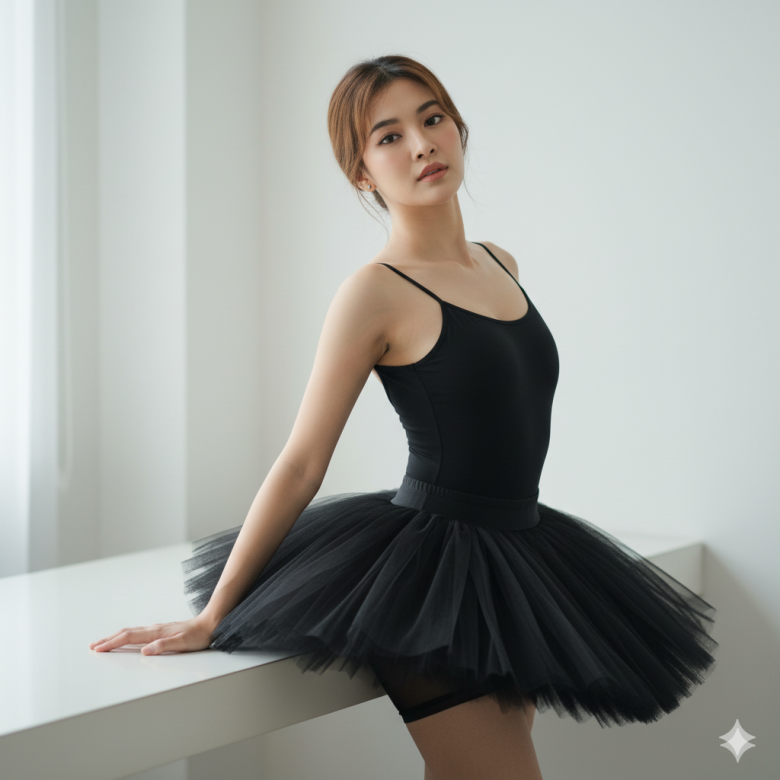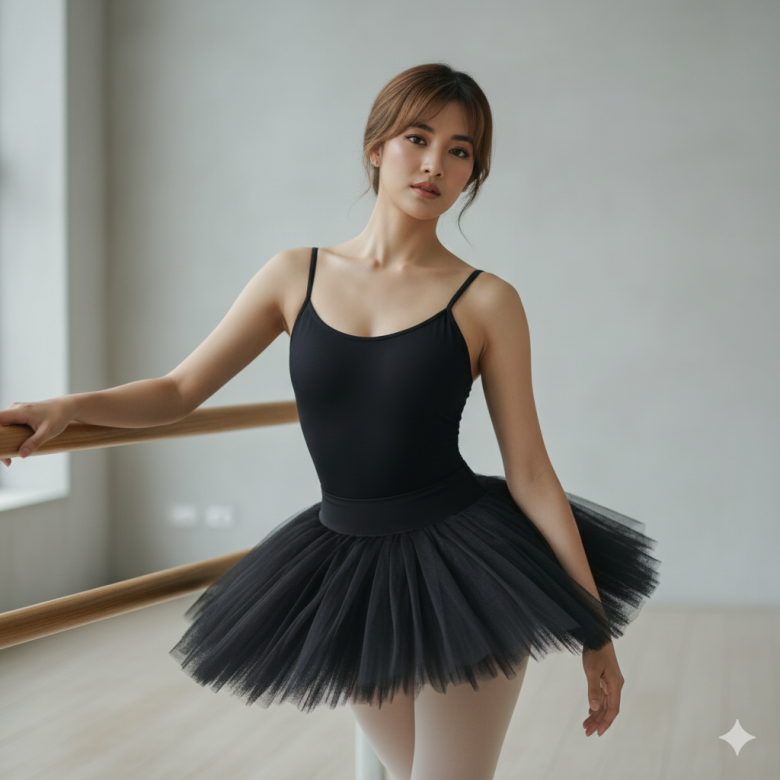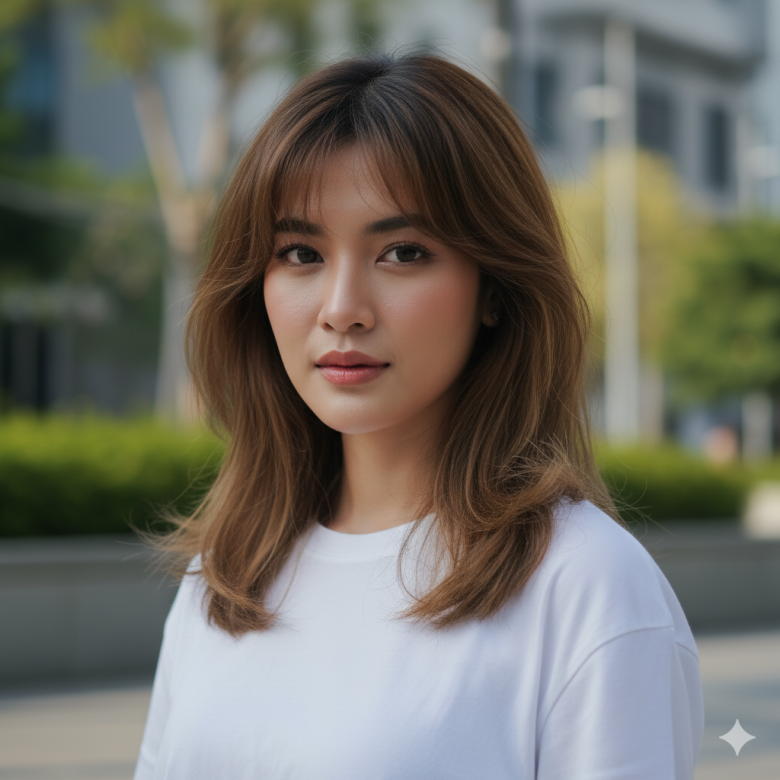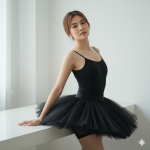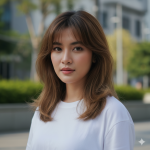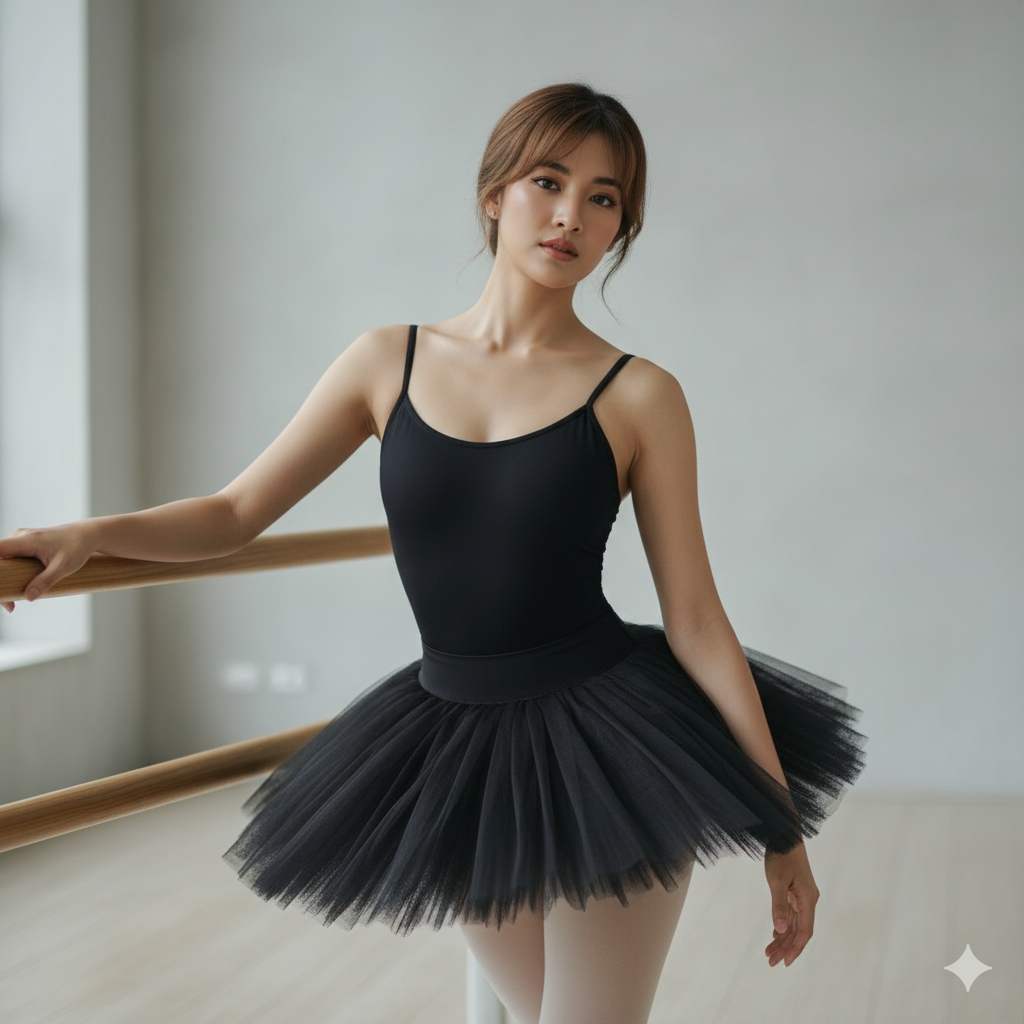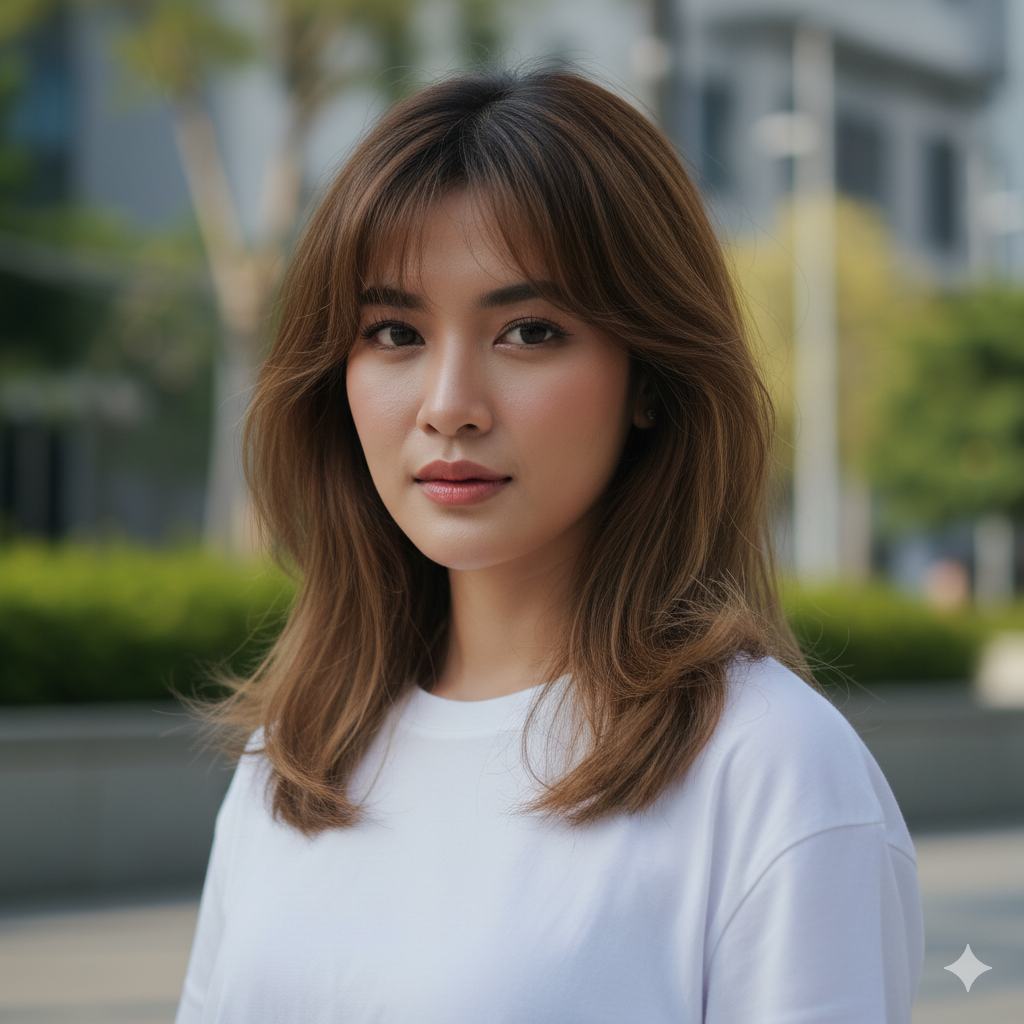Make person in the picture ultra realistic without changing original facial details.
Body Movement & Pose: The subject leans against a table or flat surface. The body tilts slightly backward, with the back and hips resting against the table. The head turns back toward the camera, with a calm, gentle, and slightly melancholic gaze. The right arm is relaxed at the side, while the left arm bends at the elbow, resting on the table. The pose conveys grace, softness, and a touch of fragility—typical of a ballet dancer.
Outfit (Leotard with Skirt): Wearing a black ballet costume.
Top (Leotard): A plain black ballet leotard with spaghetti straps. The fabric appears elastic and form-fitting, showing the natural line of the body. The neckline is rounded or slightly V-shaped. Chest size small to medium.
Bottom (Tutu/Skirt): A short, layered black tutu made of tulle or fine mesh that flares softly. The skirt covers the hips and part of the upper thighs. The bottom part of the leotard or attached shorts in semi-transparent black is visible underneath. No separate underwear visible.
Accessories: No visible accessories other than the ballet outfit.
Mood & Atmosphere: The atmosphere is calm, elegant, and minimalist. The mood is gentle, melancholic, and slightly mysterious. The setting resembles a ballet studio, dressing room, or a clean, bright room with a simple background.
Chest Size: Small to medium.
Camera & Photography Technique:
Camera: Mirrorless Hasselblad X2D 100C.
Lens: Hasselblad XCD 80mm f/1.9 (for strong subject isolation and sharp detail).
Aperture: f/2.0 (to create a shallow depth of field, sharp focus on the subject, and a soft background).
Shutter Speed: 1/125s (sufficient for gentle indoor lighting).
ISO: 200 (ensuring optimal image quality in indoor light).
Perspective Angle: Eye-level shot, slightly below the subject’s line of sight, enhancing elegance.
Framing: Medium full shot, cropped slightly above the head and mid-thigh, focusing on facial expression, pose, and costume details.
Focus: Extremely sharp on the subject’s eyes and face.
Lighting:
Setup: Soft, ambient natural light from an unseen window, likely from the front-left side (viewer’s perspective).
Quality: Soft, diffused light creating very gentle shadows and smooth skin tone gradients.
Direction: Main light from the front-left softly illuminates the face and front body, creating highlights on the cheekbones and shoulders. Shadowed areas remain soft and natural, adding dimension. The bright background adds a subtle glow.
Color: Neutral to slightly cool white balance, producing natural and clean skin tones and a modern room feel.
Composition:
Rules: The subject is centered horizontally but slightly lower vertically, leaving space above. The diagonal lines of the pose and tutu create soft visual flow.
Negative Space: Plain white walls and the table serve as clean negative space, emphasizing the subject.
Balance: Visually balanced, with the subject as the main focal point.
Color Palette: Dominated by black, white/cream (background), and natural skin tones.
Texture Detail: Elastic leotard fabric, delicate layers of tulle, and smooth skin texture.
Wind Direction: No noticeable wind; hair tied in a low bun with a few loose strands on the forehead and sides of the face, appearing neat and unaffected by motion.
Artistic or Image Effect: Fine art photography emphasizing realism, natural beauty, and classical ballet aesthetics. Soft contrast and natural color saturation. Details of facial expression and tutu texture must be sharply visible. The overall effect is graceful, poetic, and artistic.
Negative Prompts: Not CGI, not anime, not cartoon, not painting, not sketch, not drawing, not illustration, not 3D render, not sculpture, not action figure, not doll, not comic, not vector, not game art, not digital art, not “sexy,” not “sensual,” not “erotic,” not “nude,” not “provocative,” not “explicit.”
